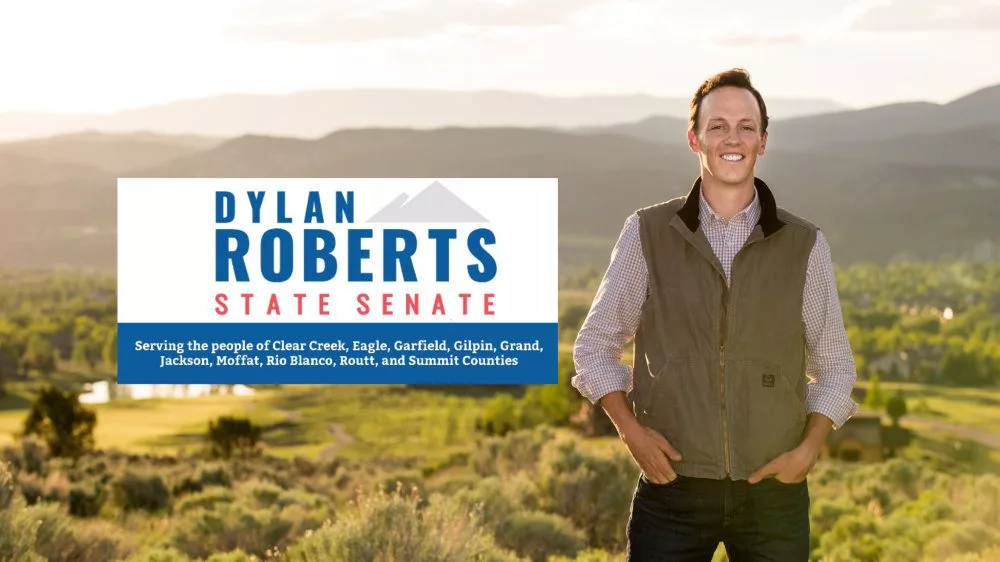
By Dylan Roberts: This piece outlines what’s included in this year’s budget, and the tough decisions we had to make to ensure the state meets its constitutional obligation to balance the budget. It also highlights the ways I’ve worked to make sure rural Colorado isn’t left behind.
A Difficult, Responsible State Budget
Colorado is constitutionally required to pass a balanced annual state budget. Each year, the legislature has to make decisions on how to allocate limited resources to our state programs and obligations: about two-thirds of the general fund each year is allocated to K-12 education and Medicaid and the other third is split among transportation, prisons, public health, and a multitude of other state agencies, programs, and services for Coloradans.
This year’s budget process has been particularly difficult as we were tasked with closing a nearly $1.2 billion shortfall in order to balance the budget. After months of debate, proposals, and compromise, the state Senate just passed a bipartisan, balanced, state budget that contains some difficult, yet necessary, cuts while preserving support for key priorities like K-12 education.
How did we get here?
These budget cuts are not because Colorado’s economy is poor or due to unwise spending decisions in the past. The Colorado economy continues to do well, even in the face of affordability challenges (and that could all change with the imposition of tariffs on the federal level).
So what happened? In the last year, Medicaid utilization rates have far exceeded historical averages. In addition, the cost of providing medical care has increased exponentially. Part of the budget deficit is the result of needing to pay for medical services that have already been provided to Coloradans and improved estimates that more accurately reflect the increased cost of continuing care. Further, the Taxpayer’s Bill of Rights, also known as TABOR, allows the state budget to grow based on a formula using population growth and inflation as the only two variables. In this case, the state-wide inflation rate is far lower than medical inflation, meaning that our budget is not able to account for the true cost of existing services and requires cuts to balance it.
In addition, Colorado voters have passed several ballot measures that cost a considerable amount of funds over the years to which the legislature is legally obligated to fund, regardless of our annual budget outlook.
All these factors and more combined and we were faced with a challenging situation in endeavoring to balance our state budget.
What does this year’s budget look like?
For the 2025-2026 budget, we protected and increased K-12 education funding, made investments in higher education, avoided substantial cuts to Medicaid and tried to make sure the cuts were not disproportionately severe to any essential responsibility of the state.
Last year, we made historic investments to pay off the ‘budget stabilization’ factor and fully fund K-12 education. That landmark was the culmination of years of effort and financial planning by the state, and bringing back the education funding deficit was not something anyone in the legislature was willing to consider. In addition, last year we passed an updated public school finance formula, led by the Speaker of the House Julie McCluskie, that was designed to better support rural schools and students in need of extra support. Protecting funding for our students and hard-working teachers, especially in rural schools, was one of my top considerations in the budget this year and I am pleased to say that our school finance projections for the coming year show a $150 million increase in funding instead of any cuts.
In order to meet our obligation to pass a balanced budget, we had to make difficult and significant cuts to programs that we all care about like transportation. We’re not happy about having to make these cuts, but doing so allows us to protect essential services including Medicaid and education.
As a senator for rural Colorado, I fought successfully to add in a little more investment for our critical health care clinics that are the last safety net for so many. I am also working on other bills to ensure that we are protecting and expanding funding for water projects that benefit agriculture and outdoor recreation, no matter what happens with our state budget year over year. Finally, I successfully inserted a budget footnote that will hold Colorado Parks and Wildlife accountable to more responsibly spending the funding they are receiving for wolf reintroduction and allocating proper resources to help ranchers and communities with this ongoing and growing challenge.
In the end, the Senate passed our balanced 2025-2026 state budget with a bipartisan vote of support.
Looking forward
Working on and ultimately voting in favor of this year’s budget was difficult, but necessary. Every Colorado family will feel the effects of the budget cuts we were required to make, and I ask that you be in touch with me directly as you navigate potential changes and challenges. I am, as always, deeply committed to ensuring that our rural communities are not forgotten in conversations at the Capitol. Please reach out anytime to share ideas at SenatorDylanRoberts@gmail.com or my cell: 970-846-3054.
Dylan Roberts is the State Senator for Clear Creek, Eagle, Garfield, Gilpin, Grand, Jackson,
Moffat, Rio Blanco, Routt and Summit Counties.